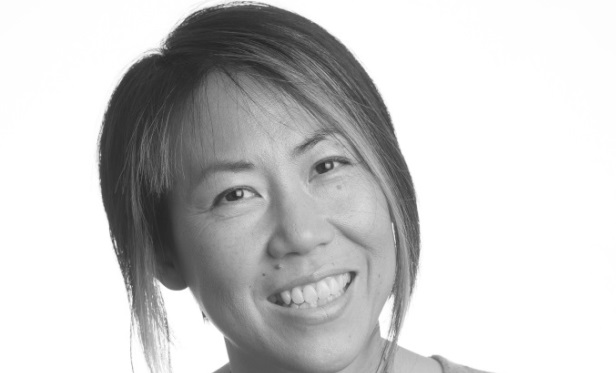
SAN JOSE—It is possible to change the culture of a company through workplace design, says Lillian Chung, senior interior designer at HGA Architects and Engineers. She discusses the process for transforming a traditional workplace into a progressive one and how companies can be successful in making that change in this GlobeSt.com exclusive.
GlobeSt.com: What is the process for successfully transforming a “traditional” workplace into a “progressive” workplace?
Chung: Conventionally, private offices are located along the window line. The current trend is to move offices towards the core of the building. This allows a more open floorplan with more access to windows. Another approach towards a progressive workplace is incorporating principals of LEED certification and WELL Building Standards. Both standards promote sustainability and wellness in the workplace. A progressive workplace in comparison to a traditional workplace supports and recognizes the value of employees' health and wellness.
GlobeSt.com: How do you determine which workstation choices to include in the design (i.e. social, private, training/education, collaboration, etc.)?
Chung: There are many factors to consider. Overall, it's based on the functionality of the space and the client's program needs. Manufacturers are responding to the need of choices by offering a wide variety of furniture solutions. The size of workstations has been shrinking over the years. In exchange of the smaller footprint, manufacturers have come up with creative solutions for storage. Workstations are becoming smaller in footprint with lower panels which allows for more collaboration.
In recognition of wellness in the workplace, sit-stand workstations have become popular. A few years ago, a doctor's note was required to get one, but nowadays it's common that high-tech companies offer them as a standard workstation. Another alternative is the treadmill workstation which offers the end user to walk and work at the same time. It's still in its infancy, but it's an option that is available. The younger generation tends to work collaboratively and the benching solution seems to work well.
GlobeSt.com: Are larger companies more challenging to change than smaller/boutique companies?
Chung: Not necessarily—the challenges of achieving change is not always dependent on size but rather on corporate mindset. The benefit of working with larger companies is that they often have resources to roll out change management in a thoughtful way with focus groups and design sessions to engage their workforce to get feedback. In addition, larger firms often have matrices and design standards that designers can reference and build upon. On the other end, smaller/boutique companies are typically recognized for their unique identities in the marketplace. Their corporate branding offers inspiration for design. Also, by nature of being smaller, these companies are nimble and quick to implement new ideas.
GlobeSt.com: What are the unique challenges for each company size?
Chung: The challenges that some large companies face is that they are sometimes deeply engrained in their corporate culture, habits and preferences making them less receptive to new ideas despite their initial intent. With a larger workforce, there are often legacy staff members that have grown accustomed to their environment and resist change. On the other hand, smaller firms, in their effort to embrace change are sometimes susceptible to lack of direction and reliant on the design process to explore many avenues of ideas. Without a clear path for their design intent, the process to implement change can be circuitous.
GlobeSt.com: Before any design takes place, what is the process for getting to know the client?
Chung: The process of getting to know one's client starts early; often before the project has been awarded. The initial process usually begins with researching on the Internet. Sometimes, it's possible to inquire within one's network. The best way is through direct communication—being present. Oftentimes at the end of the project, not only is there a new space but a new friendship.
GlobeSt.com: Is it possible to change the culture of the company through workplace design?
Chung: Yes—it is my profound belief that workplace design can change the culture of any firm. As designers, our goal is to bring positive change into our physical surroundings through a series of problem solving. We focus on understanding the situation and address a myriad of issues such as ergonomic, aesthetic, organizational, etc. The effort put forth to improve the workplace requires change. Positive change is powerful.

SAN JOSE—It is possible to change the culture of a company through workplace design, says Lillian Chung, senior interior designer at HGA Architects and Engineers. She discusses the process for transforming a traditional workplace into a progressive one and how companies can be successful in making that change in this GlobeSt.com exclusive.
GlobeSt.com: What is the process for successfully transforming a “traditional” workplace into a “progressive” workplace?
Chung: Conventionally, private offices are located along the window line. The current trend is to move offices towards the core of the building. This allows a more open floorplan with more access to windows. Another approach towards a progressive workplace is incorporating principals of LEED certification and WELL Building Standards. Both standards promote sustainability and wellness in the workplace. A progressive workplace in comparison to a traditional workplace supports and recognizes the value of employees' health and wellness.
GlobeSt.com: How do you determine which workstation choices to include in the design (i.e. social, private, training/education, collaboration, etc.)?
Chung: There are many factors to consider. Overall, it's based on the functionality of the space and the client's program needs. Manufacturers are responding to the need of choices by offering a wide variety of furniture solutions. The size of workstations has been shrinking over the years. In exchange of the smaller footprint, manufacturers have come up with creative solutions for storage. Workstations are becoming smaller in footprint with lower panels which allows for more collaboration.
In recognition of wellness in the workplace, sit-stand workstations have become popular. A few years ago, a doctor's note was required to get one, but nowadays it's common that high-tech companies offer them as a standard workstation. Another alternative is the treadmill workstation which offers the end user to walk and work at the same time. It's still in its infancy, but it's an option that is available. The younger generation tends to work collaboratively and the benching solution seems to work well.
GlobeSt.com: Are larger companies more challenging to change than smaller/boutique companies?
Chung: Not necessarily—the challenges of achieving change is not always dependent on size but rather on corporate mindset. The benefit of working with larger companies is that they often have resources to roll out change management in a thoughtful way with focus groups and design sessions to engage their workforce to get feedback. In addition, larger firms often have matrices and design standards that designers can reference and build upon. On the other end, smaller/boutique companies are typically recognized for their unique identities in the marketplace. Their corporate branding offers inspiration for design. Also, by nature of being smaller, these companies are nimble and quick to implement new ideas.
GlobeSt.com: What are the unique challenges for each company size?
Chung: The challenges that some large companies face is that they are sometimes deeply engrained in their corporate culture, habits and preferences making them less receptive to new ideas despite their initial intent. With a larger workforce, there are often legacy staff members that have grown accustomed to their environment and resist change. On the other hand, smaller firms, in their effort to embrace change are sometimes susceptible to lack of direction and reliant on the design process to explore many avenues of ideas. Without a clear path for their design intent, the process to implement change can be circuitous.
GlobeSt.com: Before any design takes place, what is the process for getting to know the client?
Chung: The process of getting to know one's client starts early; often before the project has been awarded. The initial process usually begins with researching on the Internet. Sometimes, it's possible to inquire within one's network. The best way is through direct communication—being present. Oftentimes at the end of the project, not only is there a new space but a new friendship.
GlobeSt.com: Is it possible to change the culture of the company through workplace design?
Chung: Yes—it is my profound belief that workplace design can change the culture of any firm. As designers, our goal is to bring positive change into our physical surroundings through a series of problem solving. We focus on understanding the situation and address a myriad of issues such as ergonomic, aesthetic, organizational, etc. The effort put forth to improve the workplace requires change. Positive change is powerful.
Want to continue reading?
Become a Free ALM Digital Reader.
Once you are an ALM Digital Member, you’ll receive:
- Breaking commercial real estate news and analysis, on-site and via our newsletters and custom alerts
- Educational webcasts, white papers, and ebooks from industry thought leaders
- Critical coverage of the property casualty insurance and financial advisory markets on our other ALM sites, PropertyCasualty360 and ThinkAdvisor
Already have an account? Sign In Now
*May exclude premium content© 2025 ALM Global, LLC, All Rights Reserved. Request academic re-use from www.copyright.com. All other uses, submit a request to [email protected]. For more information visit Asset & Logo Licensing.








